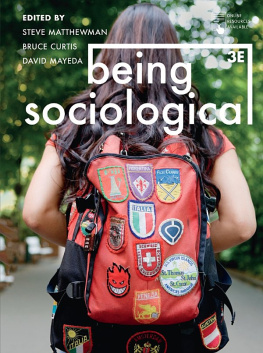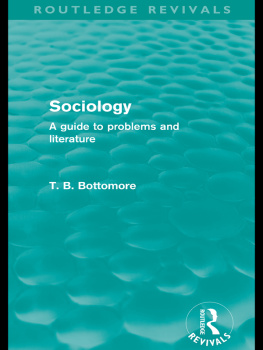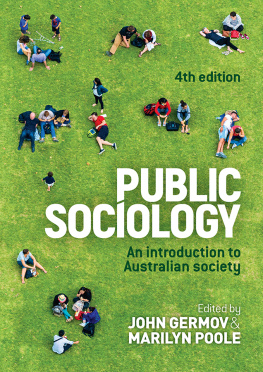BEING SOCIOLOGICAL
BEING SOCIOLOGICAL
3rd EDITION
Edited by
STEVE MATTHEWMAN
BRUCE CURTIS
DAVID MAYEDA

Steve Matthewman, Bruce Curtis and David Mayeda under exclusive licence to Macmillan Education Limited 2021
Individual chapters respective authors.
Steve Matthewman, Catherine Lane West-Newman and Bruce Curtis 2007, 2013
All rights reserved. No reproduction, copy or transmission of this publication may be made without written permission.
No portion of this publication may be reproduced, copied or transmitted save with written permission or in accordance with the provisions of the Copyright, Designs and Patents Act 1988, or under the terms of any licence permitting limited copying issued by the Copyright Licensing Agency, Saffron House, 610 Kirby Street, London EC1N 8TS.
Any person who does any unauthorized act in relation to this publication may be liable to criminal prosecution and civil claims for damages.
The authors have asserted their rights to be identified as the authors of this work in accordance with the Copyright, Designs and Patents Act 1988.
This edition published 2021 by
RED GLOBE PRESS
Previous editions published under the imprint PALGRAVE
Red Globe Press in the UK is an imprint of Macmillan Education Limited, registered in England, company number 01755588, of 4 Crinan Street, London, N1 9XW.
Red Globe Press is a registered trademark in the United States, the United Kingdom, Europe and other countries.
ISBN 9781352011234 hardback
ISBN 9781352011159 paperback
This book is printed on paper suitable for recycling and made from fully managed and sustained forest sources. Logging, pulping and manufacturing processes are expected to conform to the environmental regulations of the country of origin.
A catalogue record for this book is available from the British Library.
A catalog record for this book is available from the Library of Congress.
Commissioning Editor : Lloyd Langman, Peter Hooper
Development Editor : Nikini Arulanandam
Cover Designer : Toby Way
Production Editor : Elizabeth Holmes
Marketing Manager : Helen Jackson
BRIEF CONTENTS
Steve Matthewman
Bruce Curtis
Lucy Mayblin
Daniel Smith
Adrian Franklin
Bruce Curtis
Sara Salman
Suzanne Woodward
David Mayeda
Kate Huppatz
Mary Holmes
Raelene Wilding
Tracey Mcintosh
Farzana Shain
David Bartram
Luke Goode
Chris Rojek and Stephanie Alice Baker
Thomas Thurnell-Read
Dylan Taylor and Chamsy el Ojeili
Steve Matthewman
CONTENTS
Steve Matthewman
Bruce Curtis
Lucy Mayblin
Daniel Smith
Adrian Franklin
Bruce Curtis
Sara Salman
Suzanne Woodward
David Mayeda
Kate Huppatz
Mary Holmes
Raelene Wilding
Tracey Mcintosh
Farzana Shain
David Bartram
Luke Goode
Chris Rojek and Stephanie Alice Baker
Thomas Thurnell-Read
Dylan Taylor and Chamsy el Ojeili
Steve Matthewman
LIST OF FIGURES AND TABLES
Figures
Tables
TOUR OF THE BOOK
Key points Outline the core ideas and themes that you will discover in the chapter. | 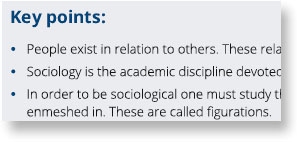
|
On-page glossary Succinct definitions of the most important terms related to the topic of the chapter, placed in the margin for quick reference. | 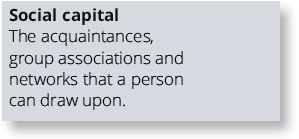
|
SHiP boxes Explore the broader forces that come to bear on social environments. See further explanation on p. xvii. | 
|
Sociological solutions boxes Showcase potential avenues for change that tackle or respond to social problems. See further explanation on p. xix. | 
|
Suggestions for further reading Key recommendations of useful works to broaden your learning and expand on what has been covered in the chapter. | 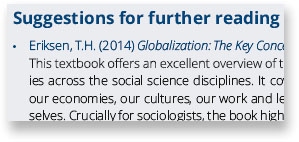
|
References Citation details for the major works and research studies referenced in the chapter. | 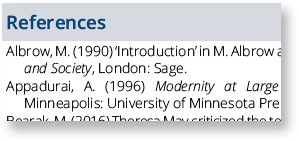
|
End-of-book glossary Expanded definitions with fuller explanations collated together as a consolidated reference resource. | 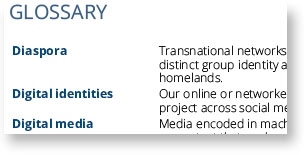
|
ABOUT THE SHiP AND SOCIOLOGICAL SOLUTIONS BOXES
SHiP
In order to be sociological, you need to be able to see beyond yourself, to see the connections and relationships you have with others, to understand the environment you are embedded in and to know the broader social, economic, political and historical forces that bear down upon you. This textbook makes use of a SHiP framework to help you do this, where:
S = social structure
H = history
i = individual
P = power
Social structure
Social structures are relatively stable across time. Structures exist beyond individuals and groups but operate on them continuously. They shape social life. When sociologists talk about social structure they are referring to three things orders, patterns and outcomes. Orders are institutions and social systems. Sociologically speaking, institutions are systems of rules (Hodgson, 2015: 45). Institutions involve people taking on various patterned and lasting roles, statuses and norms in order to meet fundamental social needs. Social systems are formal structures of institutions, roles and statuses as they apply to particular, identifiable stable groups. Patterns refer to customs, habits, norms and traditions (social life is typically ordered and predictable). Sociologists devote a lot of their time to studying the consequences of particular social structures. For example, patriarchy is a structure. The outcomes it produces include the under-representation of women in positions of power, feminized jobs with low status and low wages, laws and practices that regulate and control womens bodies, and the use of violence by men against women.
History
There is not one fixed human society, rather human society exists in numerous historical forms, and each changes across time. This is significant for sociologists because the person we can become is intimately connected to the society, and times, in which we live. Comparing different societies, and examining and explaining them, is a key component of sociological work. Across time our societies have got larger and more complex, their social structures have changed, as have their means of external control (and modes of self-regulation), all of which means that what it is to be human has changed markedly throughout history. As the novelist L.P. Hartley (2002: 17) put it, The past is a foreign country: they do things differently there. Knowledge of past societies enhances our understanding of our own; it leads to considerations of how and why societies differ. This historical sensibility also enables us to understand how things have been, how they are now and how we would like them to be in the future.

